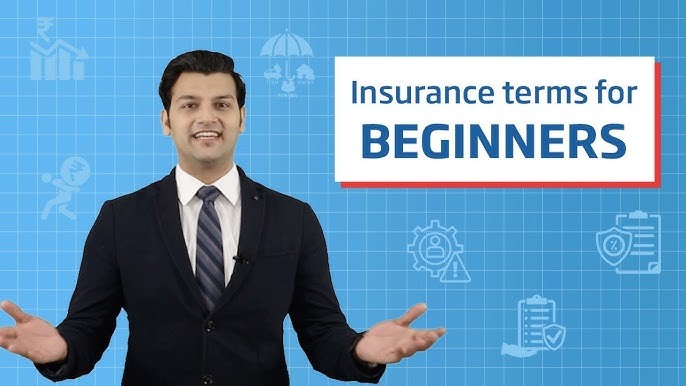The world of insurance, for all its undeniable importance in safeguarding our financial futures, often presents itself as an impenetrable fortress of specialized terminology. For beginners, or indeed for anyone outside the industry, the sheer volume of jargon can be overwhelming, turning what should be a straightforward protective measure into a bewildering exercise in deciphering an alien language. Words like “deductible,” “premium,” “indemnity,” and “endorsement” are bandied about with assumed understanding, yet their precise meanings are critical to truly grasping what your policy offers and what it demands of you. Demystifying this language is the first crucial step toward becoming an empowered and informed insurance consumer.
Let’s begin with one of the most fundamental terms: **Premium**. This is perhaps the most familiar piece of jargon, yet its full implication can sometimes be overlooked. Simply put, the premium is the amount of money you pay to the insurance company in exchange for coverage. It’s your regular payment – whether monthly, quarterly, or annually – that keeps your policy active. Think of it as the price you pay for peace of mind, the cost of transferring your financial risk to the insurer. The premium amount is calculated based on various factors, including your risk profile, the type and amount of coverage, and the insurer’s assessment of potential payouts.
Closely related to the premium is the **Deductible**. This is a crucial concept that directly impacts your out-of-pocket expenses when you file a claim. The deductible is the amount of money you must pay yourself before your insurance coverage kicks in and the insurer starts paying. For example, if you have a car insurance policy with a $500 deductible and your car sustains $2,000 worth of damage in an accident, you would pay the first $500, and your insurer would cover the remaining $1,500. Deductibles are designed to encourage policyholders to share in the risk and to reduce the number of small claims. Generally, policies with higher deductibles have lower premiums, as you’re taking on more of the initial financial burden yourself.
Next, we encounter **Policy Limits** or **Coverage Limits**. These terms refer to the maximum amount of money an insurance company will pay out for a covered loss. For instance, your auto insurance might have a $100,000 liability limit per person, meaning the insurer will pay up to $100,000 for injuries to one person in an accident you cause. Your home insurance might have a $300,000 dwelling coverage limit, which is the maximum amount the insurer will pay to rebuild your home. Understanding your policy limits is vital because if the cost of a loss exceeds these limits, you are personally responsible for the difference. It’s a key factor in determining if your coverage is truly adequate for your potential risks.
Another foundational term is **Peril**. In insurance, a peril refers to the cause of a loss or damage. Common perils include fire, theft, windstorm, hail, and vandalism. Insurance policies typically list the specific perils they cover. Some policies, like certain homeowner’s policies, are “named perils” policies, meaning they only cover losses caused by the perils explicitly listed in the contract. Others are “open perils” or “all-risk” policies, which cover all perils except those specifically excluded. Understanding the perils covered by your policy is crucial for knowing when you can expect a payout.
Speaking of exclusions, the term **Exclusions** is critical. These are specific situations, conditions, or causes of loss that an insurance policy *does not* cover. For example, most standard homeowner’s policies exclude damage caused by floods or earthquakes, requiring separate, specialized coverage. Health insurance policies might exclude certain pre-existing conditions or experimental treatments. Understanding these exclusions is paramount because they represent the gaps in your coverage. If a risk that genuinely concerns you is listed as an exclusion, you either need to accept that risk, seek an endorsement to cover it, or find a different policy or insurer.
An **Endorsement** (sometimes called a Rider) is an amendment or addition to an existing insurance policy that changes its terms or scope of coverage. Endorsements can be used to add coverage for something not originally included, clarify a specific clause, or even restrict coverage. For instance, if you want to add coverage for valuable jewelry to your standard homeowner’s policy, you would likely do so via an endorsement. For businesses, a cyber liability endorsement might be added to a commercial general liability policy. These are just as legally binding as the main policy text and are vital to review if you’ve added or changed coverage.
The concept of **Liability** is pervasive across many types of insurance, particularly auto, home, and business policies. Liability refers to your legal responsibility for causing harm or damage to another person or their property. Liability insurance protects you financially if you are found responsible for an accident, injury, or property damage to someone else. It typically covers legal defense costs and any judgments or settlements up to your policy limits. Without adequate liability coverage, a single lawsuit could devastate your personal finances or business.
Finally, while not always “jargon” in the strictest sense, understanding the difference between an **Agent** and a **Broker** can be helpful. An **Agent** typically represents one or a limited number of specific insurance companies and sells their products. A **Broker**, on the other hand, works independently and represents the client, shopping around to find policies from various insurance companies that best fit the client’s needs. Both can be valuable resources, but knowing their differing affiliations can help you understand the advice you receive.
Demystifying insurance jargon is not merely an academic exercise; it’s a practical necessity for making informed decisions that protect your financial well-being. By understanding terms like premium, deductible, policy limits, perils, exclusions, and endorsements, you transform what initially appears as a complex legal document into a clear roadmap of your coverage. Don’t be afraid to ask your agent or insurer to explain any term you don’t understand. An informed policyholder is an empowered policyholder, capable of navigating the insurance landscape with confidence and ensuring their protection is truly comprehensive.



